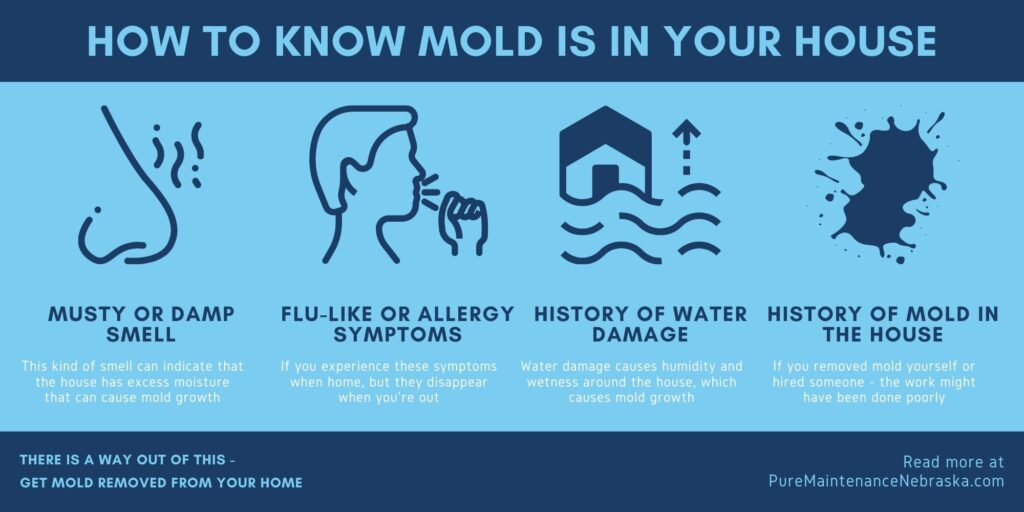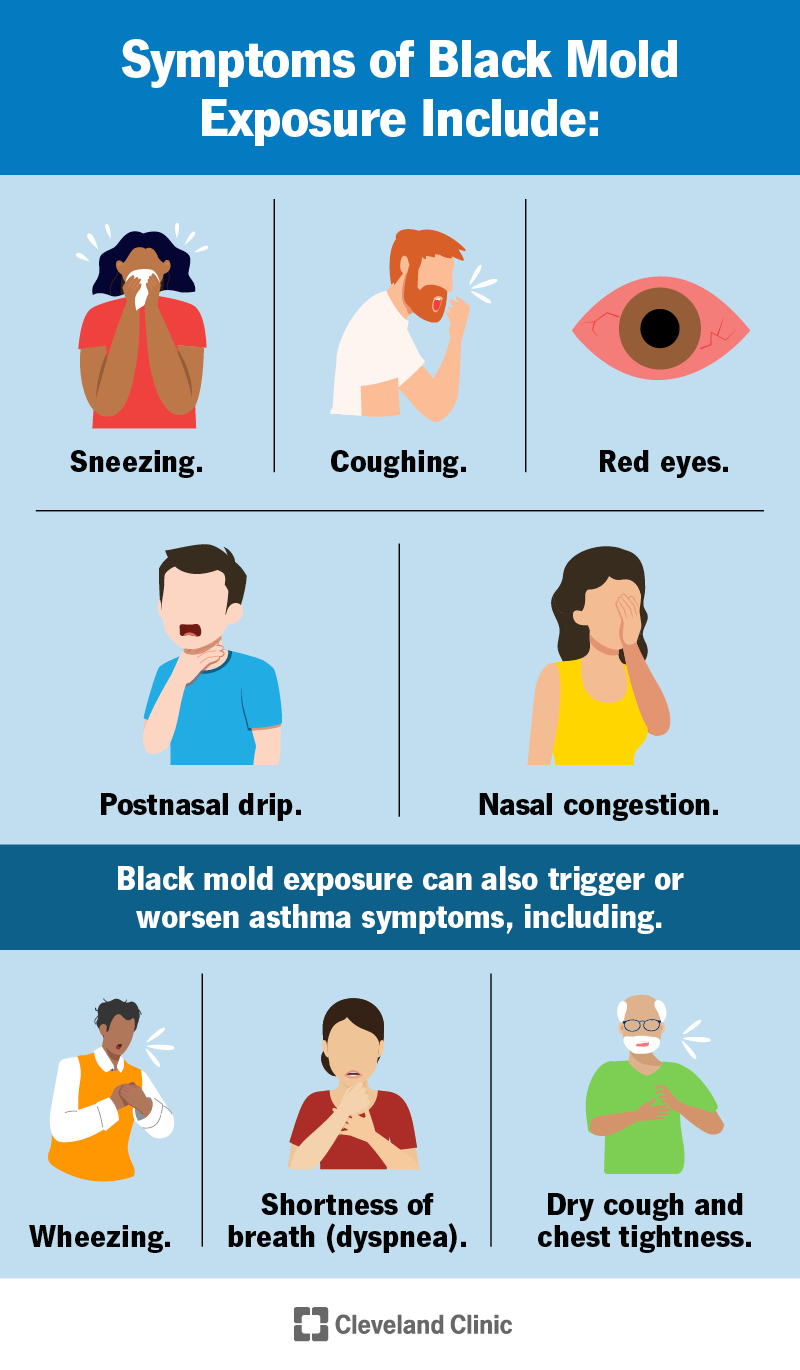In this article, you will learn about the signs and symptoms of mold and mildew exposure, as well as the health impacts they can have. Mold and mildew are common household problems that can cause allergic reactions, respiratory issues, and other health problems. By understanding the signs to look out for, you can take action to protect yourself and your loved ones from the negative health effects of mold and mildew. Stay tuned to learn more about this topic and how to keep your home safe.

What is Mold and Mildew
Mold and mildew are two types of fungi that commonly grow in damp and humid environments. While they may seem similar, there are some key differences between the two.
Definition of Mold and Mildew
Mold is a type of fungus that appears as a fuzzy or slimy growth on various surfaces. It can come in different colors, including black, green, and white. Mold thrives in moisture-rich areas and can spread quickly if not treated.
Mildew, on the other hand, is a type of mold that specifically grows on surfaces that are damp and humid. It often appears as a powdery or downy substance and is typically white or gray in color. Mildew is commonly found on bathroom walls, window sills, and fabrics.
Difference between Mold and Mildew
The main difference between mold and mildew lies in their appearance and the environments in which they thrive. Mold is usually thicker and fuzzy in texture, while mildew has a powdery or downy appearance. Mold also tends to grow on various surfaces, including walls and ceilings, whereas mildew is commonly found on damp fabrics and bathroom surfaces.
Common Signs of Mold and Mildew Exposure
Exposure to mold and mildew can have several negative effects on your health. Here are some common signs and symptoms to be aware of:
Respiratory Symptoms
One of the most common signs of mold and mildew exposure is respiratory symptoms. This can include coughing, wheezing, shortness of breath, and chest tightness. These symptoms may worsen in individuals who already have respiratory conditions like asthma or chronic obstructive pulmonary disease (COPD).
Skin Irritation
Exposure to mold and mildew can also cause skin irritation. You may experience itching, redness, and rashes when coming into contact with these fungi. This is particularly common in individuals who have sensitive skin or a history of skin allergies.
Sinus Problems
Mold and mildew spores can enter your nasal passages and cause sinus problems. This can lead to symptoms such as congestion, runny nose, sneezing, and sinus headaches. Individuals with chronic sinusitis may experience more severe symptoms when exposed to mold and mildew.
Allergic Reactions
For individuals with allergies, exposure to mold and mildew can trigger allergic reactions. This can manifest as itchy and watery eyes, nasal congestion, sneezing, and even hives. People who already have allergies are more likely to experience these symptoms when exposed to mold and mildew.
Less Common Symptoms and Health Impacts
In addition to the common signs mentioned above, exposure to mold and mildew can also have other less common symptoms and health impacts. These include:
Headaches
Some individuals may experience headaches when exposed to mold and mildew. These headaches may be mild or severe, and they can persist over time. If you find yourself frequently experiencing headaches in certain environments or after being exposed to damp areas, mold and mildew could be the culprit.
Fatigue
Exposure to mold and mildew can also leave you feeling fatigued and lacking in energy. This can be attributed to the toxins released by these fungi, which can have a negative impact on your overall well-being. If you feel tired and drained even after getting enough rest, mold and mildew exposure may be a contributing factor.
Difficulty Concentrating
Some individuals may experience difficulty concentrating or thinking clearly when exposed to mold and mildew. This can impair your ability to perform daily tasks and may even affect your work or school performance. If you find yourself struggling with focus and concentration in certain environments, it is important to consider the possibility of mold and mildew exposure.
Memory Problems
Research has shown that exposure to mold toxins can have a detrimental effect on cognitive function, including memory. If you notice changes in your memory or have difficulty remembering things after being in a moldy or mildewy environment, it is important to address the issue and take steps to minimize your exposure.
Long-term Effects of Mold and Mildew Exposure
While the immediate symptoms of mold and mildew exposure can be bothersome, prolonged exposure can have more serious long-term effects on your health. These include:
Chronic Respiratory Conditions
Continued exposure to mold and mildew can lead to the development or worsening of chronic respiratory conditions. This includes conditions such as asthma, bronchitis, and recurring respiratory infections. Individuals with pre-existing respiratory conditions need to be especially cautious about mold and mildew exposure to prevent further deterioration of their respiratory health.
Weakened Immune System
Exposure to mold and mildew can weaken your immune system, making you more susceptible to infections and illnesses. The toxins released by these fungi can suppress immune function, leaving your body less able to fight off harmful bacteria and viruses.
Neurological Disorders
Some studies have suggested a link between mold and mildew exposure and the development of neurological disorders. Prolonged exposure to mold toxins can affect brain function and may contribute to the development of conditions such as memory loss, difficulty with coordination, and even mood disorders.
Groups at Higher Risk
While anyone can be affected by mold and mildew exposure, certain groups are at a higher risk of experiencing adverse health effects. These include:
Children
Children are more vulnerable to the health impacts of mold and mildew exposure due to their developing immune systems and smaller lung capacity. They may experience more severe symptoms and are at a higher risk of developing respiratory conditions.
Elderly Individuals
Elderly individuals may already have compromised immune systems or pre-existing respiratory conditions, making them more susceptible to the negative health effects of mold and mildew exposure. Their bodies may also have a harder time recovering from illnesses and infections caused by mold and mildew.
People with Compromised Immune Systems
Individuals with compromised immune systems, such as those with HIV/AIDS or undergoing chemotherapy, are at a higher risk of developing severe symptoms and complications from mold and mildew exposure. Their weakened immune systems make it harder for their bodies to fight off the toxins and infections caused by these fungi.
How to Identify Mold and Mildew in your Environment
To protect yourself and your loved ones from the health impacts of mold and mildew exposure, it is important to be able to identify its presence in your environment. Here are some ways to do so:
Visible Signs
The most obvious way to identify mold and mildew is through visible signs. Look for fuzzy or slimy patches on surfaces and fabrics, especially in areas that are consistently damp or humid. Pay attention to corners, windowsills, bathroom walls, and basements as these are common areas for mold and mildew growth.
Musty Odor
Mold and mildew often emit a distinct musty odor. If you notice a persistent, earthy smell in your home or workplace, it may be an indication of their presence. Be particularly vigilant in areas that tend to be damp or have poor ventilation.
Testing Air Quality
If you suspect mold and mildew but cannot visually identify it, you can test the air quality in your environment. There are DIY test kits available that can detect mold spores in the air. Alternatively, you can hire a professional to conduct a thorough inspection and testing of your space.

Prevention and Control Measures
Preventing and controlling mold and mildew growth is essential to minimize the health risks associated with exposure. Here are some measures you can take:
Maintaining Low Humidity Levels
Mold and mildew thrive in humid environments, so it is important to maintain low humidity levels in your home. Use dehumidifiers in high-humidity areas and ensure proper ventilation to reduce moisture buildup.
Proper Ventilation
Proper ventilation is crucial in preventing mold and mildew growth. Ensure that your home has adequate airflow, especially in areas prone to moisture, such as bathrooms and kitchens. Use exhaust fans and open windows when necessary to allow moist air to escape.
Regular Cleaning and Maintenance
Regular cleaning and maintenance can help prevent mold and mildew growth. Clean up any spills or leaks immediately and dry affected areas thoroughly. Keep surfaces clean and dry, and regularly inspect hidden spaces like basements and crawl spaces for signs of mold and mildew.
Treatment and Remediation Options
If you discover mold and mildew in your environment, it is important to take appropriate steps for treatment and remediation. Here are some options:
Removing Mold and Mildew
For small, localized areas of mold and mildew, you can typically clean them yourself using a mixture of water and detergent. Wear protective gear such as gloves and a mask to avoid inhaling or coming into direct contact with the spores. However, for larger or more severe infestations, it is best to consult a professional mold remediation specialist.
Improving Indoor Air Quality
To improve indoor air quality, consider using air purifiers or air filters specifically designed to remove mold spores from the air. These devices can help reduce the concentration of mold and mildew in your environment, thereby minimizing your exposure.
Consulting a Professional
If you are unsure of the severity of the mold and mildew problem or if you have pre-existing health conditions, it is best to consult a professional. They can conduct a thorough assessment of your space, provide expert advice on remediation methods, and ensure that the issue is fully resolved.

Tips for Minimizing Mold and Mildew Exposure
To further minimize your exposure to mold and mildew, consider the following tips:
Keeping your Environment Dry
Keep your environment as dry as possible by promptly repairing any leaks or water damage. Dry wet items and surfaces thoroughly to prevent mold and mildew growth.
Using Dehumidifiers
In areas with high humidity, use dehumidifiers to reduce moisture levels. This can be particularly beneficial in basements, bathrooms, and other spaces prone to dampness.
Avoiding Damp Areas
Avoid spending prolonged periods of time in damp areas, such as basements or crawl spaces. If you must be in these areas, ensure they are properly ventilated and take breaks in well-ventilated spaces.
Conclusion
Understanding the signs and symptoms of mold and mildew exposure is crucial for protecting your health and the health of those around you. By being aware of these indicators, as well as implementing preventative measures and seeking appropriate treatment and remediation when necessary, you can minimize the health impacts of mold and mildew exposure. Remember to regularly inspect your environment, maintain good ventilation and humidity control, and seek professional help when needed. Stay vigilant and prioritize your well-being by taking proactive steps to address mold and mildew issues effectively.

